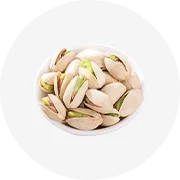



















The chestnut is a unique produce, not only relished for its rich, sweet flavor but also for its significant role in various culinary traditions. Originating from the genus Castanea, the chestnut is a hardy deciduous tree nut known for its versatility and nutritional value. This introduction delves into the various aspects of chestnuts, from their types to their uses in different cultures.
Among the diversity of chestnuts, the European chestnut (Castanea sativa), Chinese chestnut (Castanea mollissima), and American chestnut (Castanea dentata) stand out. Each variety offers unique characteristics, such as the Spanish chestnut's noted size and the sweet chestnut's distinctive flavor profile. The horse chestnut (Aesculus hippocastanum), while not an edible variety, is widely recognized for its ornamental and medicinal value.
Chestnuts are incredibly versatile. The edible varieties are often roasted, a tradition that spans many cultures, especially during festive seasons. Roasted chestnuts provide a warming, nutritious snack, while water chestnuts, though not true nuts, are a staple in Asian cuisine, known for their crunchy texture and ability to absorb flavors. Beyond culinary uses, the Guiana chestnut, primarily grown as a houseplant, adds a touch of greenery to indoor spaces.
Chestnuts are not only a culinary delight but also packed with health benefits. They are a good source of dietary fiber, antioxidants, and essential minerals. Unlike other nuts, chestnuts have a lower fat content and are high in vitamin C. The common horse chestnut is known for its compound aescin, which supports vascular health, although it is not consumed like its edible counterparts.
The harvesting of chestnuts is a careful process, ensuring the nuts are collected at the peak of ripeness. Once harvested, some varieties, like the European chestnut and Chinese chestnut, are often prepared in a chestnuts oven to enhance their natural sweetness. The process of preparing chestnuts can vary, but the goal is to maintain the integrity of the nut's flavor and nutritional value.
Sustainability is a key consideration in the cultivation of chestnuts. The American chestnut, once nearly extinct due to blight, is now the subject of conservation efforts. Sustainable farming practices are essential in maintaining the delicate balance of ecosystems where chestnuts thrive, ensuring that these valuable trees can be enjoyed for generations to come.